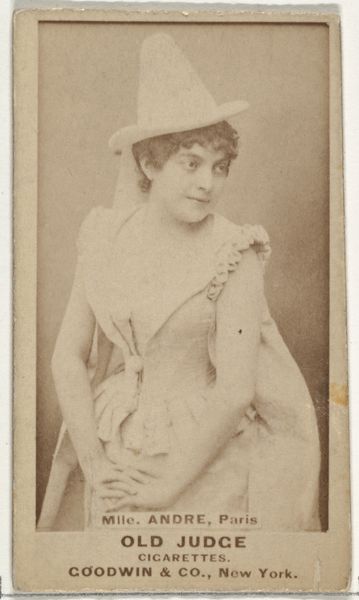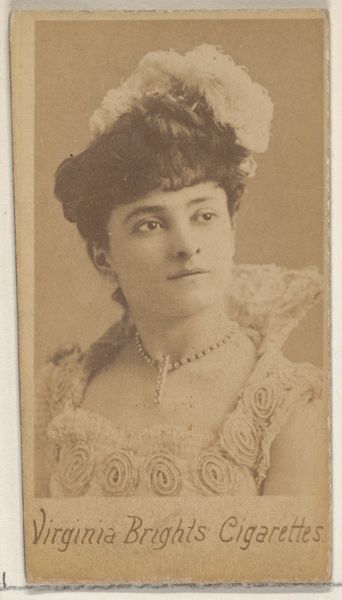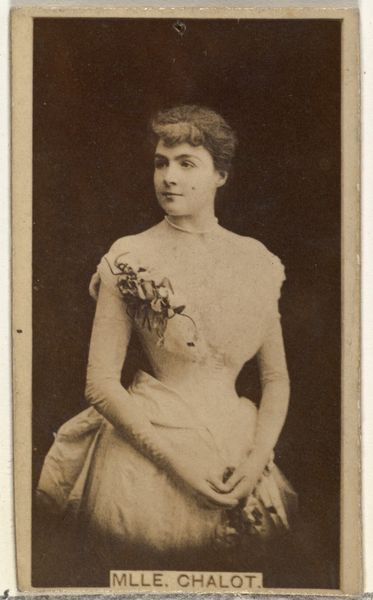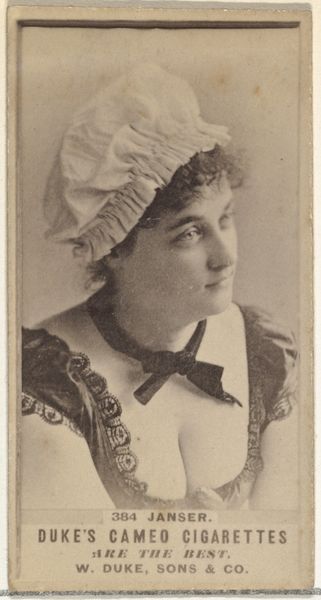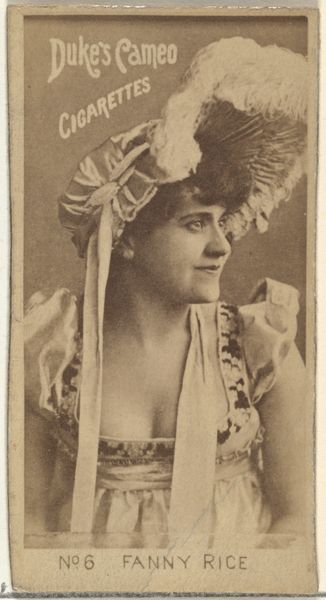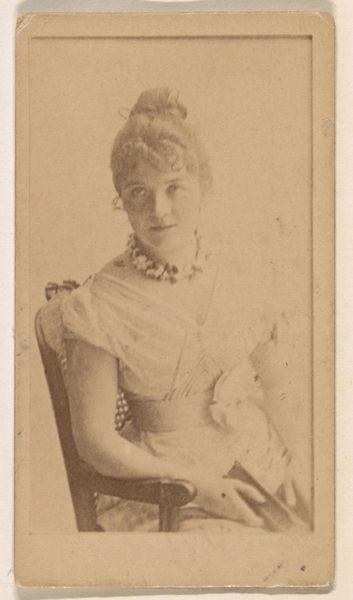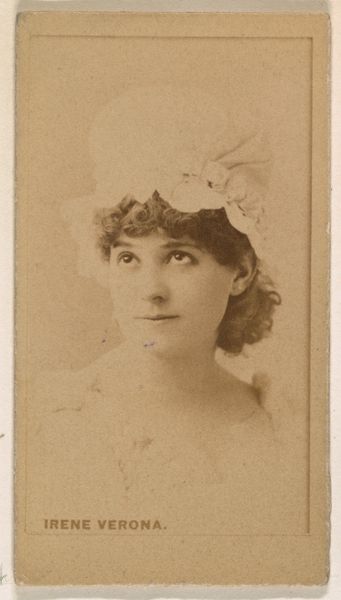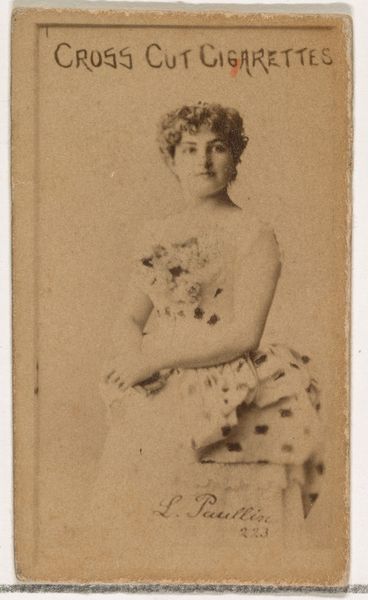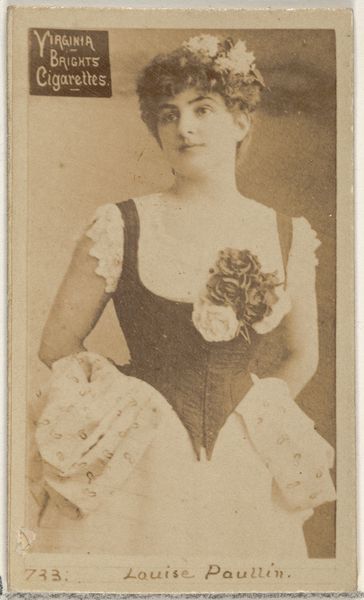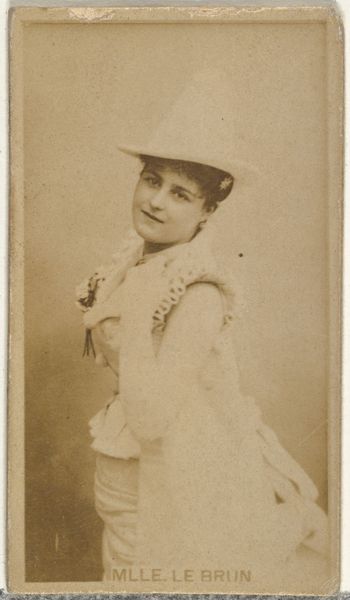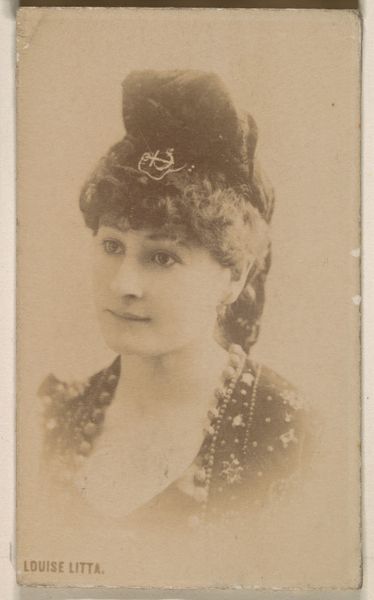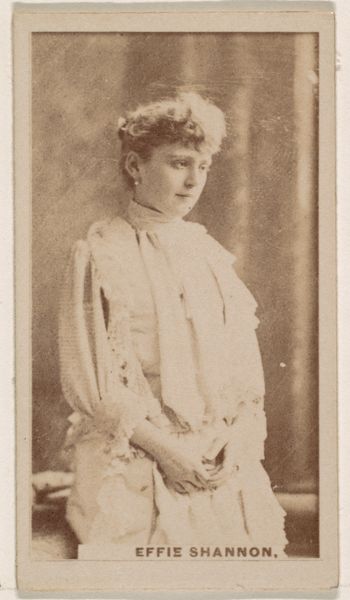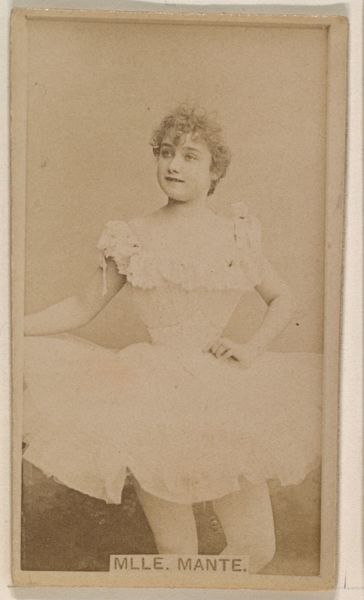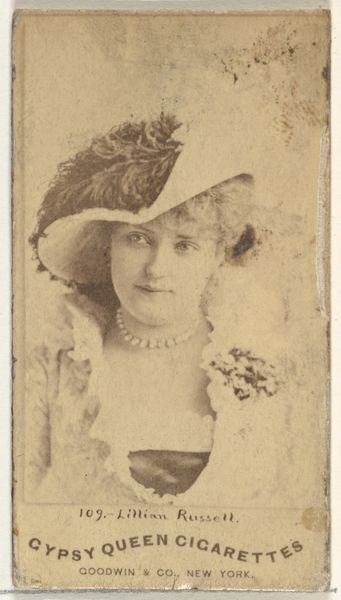
L. Vaughn, from the Actors and Actresses series (N45, Type 1) for Virginia Brights Cigarettes 1885 - 1891
0:00
0:00
drawing, print, photography, albumen-print
#
portrait
#
drawing
# print
#
figuration
#
photography
#
19th century
#
men
#
albumen-print
#
realism
Dimensions: Sheet: 2 3/4 x 1 3/8 in. (7 x 3.5 cm)
Copyright: Public Domain
Editor: Here we have an albumen print from sometime between 1885 and 1891. It's an image of L. Vaughn from the Actors and Actresses series by Allen & Ginter for Virginia Brights Cigarettes. It's striking how this small photograph was used for commercial purposes. What are your thoughts on this piece? Curator: Well, let's start with the obvious: this is not just a portrait, it's a commodity. Allen & Ginter were essentially using Vaughn’s image to move product. The albumen print, a specific photographic process popular at the time, involved coating paper with egg white to create a glossy surface for the photographic emulsion. It's interesting to consider the labour involved – the literal processing of animal products. This type of mass-produced image democratized access to portraiture but simultaneously turned artistry into a marketing strategy. Editor: So, the albumen printing process is key to understanding the piece? Curator: Absolutely. The means of production—photography paired with albumen printing—are intrinsically tied to mass consumerism and celebrity culture, even back then. The 'Actors and Actresses' series cleverly capitalizes on fame. Editor: It seems so removed from contemporary photography, being tied to something so tangible like eggs and celebrity endorsements, though. Curator: Exactly. By focusing on the materiality of the albumen print, its mass production for advertising, and the social context of using celebrity endorsements, we uncover a dialogue about labor, value, and consumption that still resonates today. This is far more than just a pretty picture of an actress. What does the overt branding reveal to you about its initial consumption? Editor: That makes a lot of sense. It’s really a study in how fame and product can be mutually constructed. I hadn’t considered the implications of the materials themselves before. Curator: Indeed! It challenges the idea of the artwork as solely an aesthetic object and asks us to consider it as a material product embedded in social and economic networks. Editor: Thanks! I'll never look at a trading card the same way again!
Comments
No comments
Be the first to comment and join the conversation on the ultimate creative platform.
